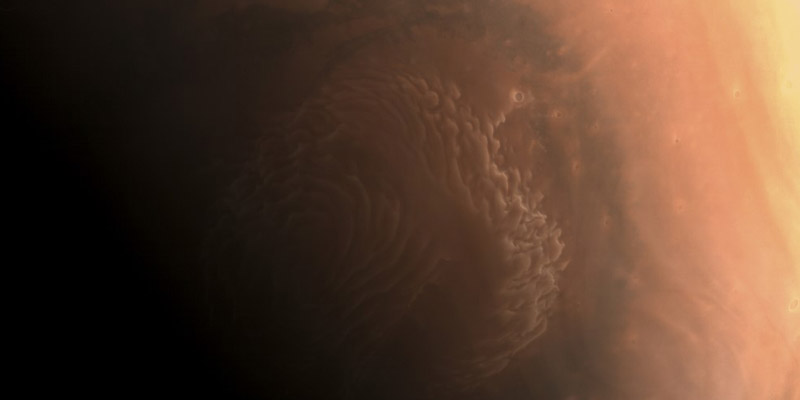- World
- Nov 20
AI robot uses meteorite from Mars to make oxygen
• Oxygen supply must be the top priority for any human activity on Mars, because rocket propellants and life support systems consume substantial amounts of oxygen.
• Recent evidence of water activity has raised the prospect of large-scale oxygen production on the planet through solar-power-driven electrochemical water oxidation processes using an oxygen evolution reaction (OER) catalyst.
• Now, scientists have developed robotic artificial intelligence (AI) chemist that can create catalysts for oxygen production from Martian meteorites.
• A team of scientists from the University of Science and Technology of China (USTC) of the Chinese Academy of Sciences (CAS) have developed an AI chemist to enable automated, self-directed synthesis.
• Using a machine-learning model, this method automatically and rapidly identifies the optimal catalyst formula from more than three million possible compositions.
• A ground-based verification system is currently being developed to provide more realistic space conditions for the AI chemist.
• The AI chemist represents a promising technique for on-site synthesis of OER electrocatalysts on Mars and constitutes a versatile and efficient platform for the supply of complex functional materials for planetary and space exploration.
Key facts on Mars
• Mars — the fourth planet from the Sun — is a dusty, cold, desert world with a very thin atmosphere.
• This dynamic planet has seasons, polar ice caps, extinct volcanoes, canyons and weather.
• Mars is one of the most explored bodies in our solar system.
• Many exploration missions have found lots of evidence that Mars was much wetter and warmer, with a thicker atmosphere, billions of years ago.
• It is one of the easiest planets to spot in the night sky. It looks like a bright red point of light.
• Mars was named by the Romans for their “God of War” because of its reddish colour.
• It is frequently called the “Red Planet” because iron minerals in the Martian dirt oxidise, or rust, causing the surface to look red.
• With a radius of 3,390 kilometers, Mars is about half the size of Earth.
• As Mars orbits the Sun, it completes one rotation every 24.6 hours, which is very similar to one day on Earth (23.9 hours). Martian days are called sols – short for “solar day”. A year on Mars lasts 669.6 sols, which is the same as 687 Earth days.
• Mars has two small moons, Phobos and Deimos, that may be captured asteroids. They are potato-shaped because they have too little mass for gravity to make them spherical.
• The moons get their names from the horses that pulled the chariot of the Ares — Greek “God of War”.
Manorama Yearbook app is now available on Google Play Store and iOS App Store

